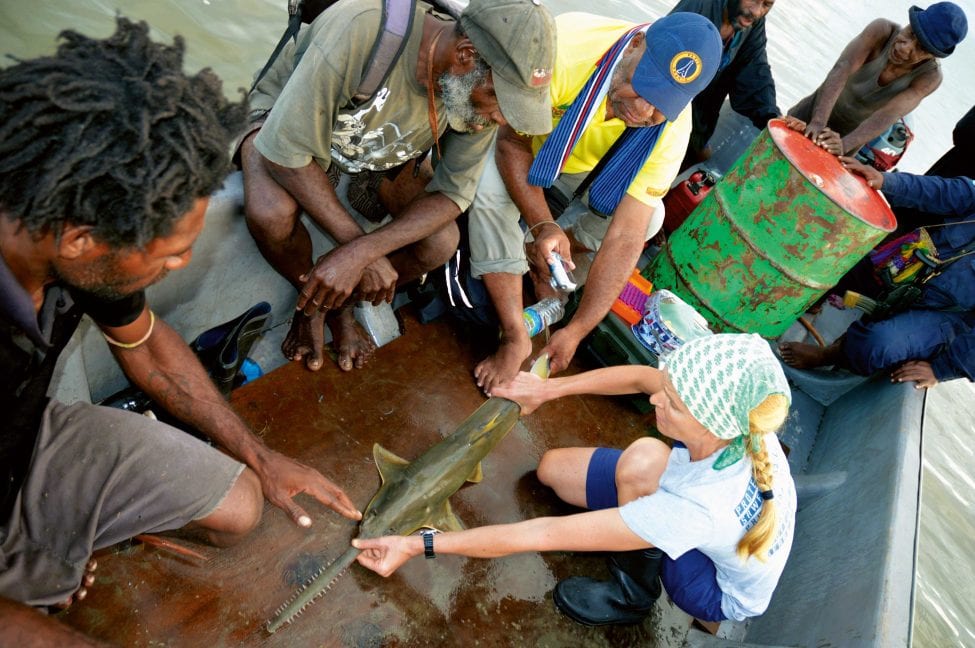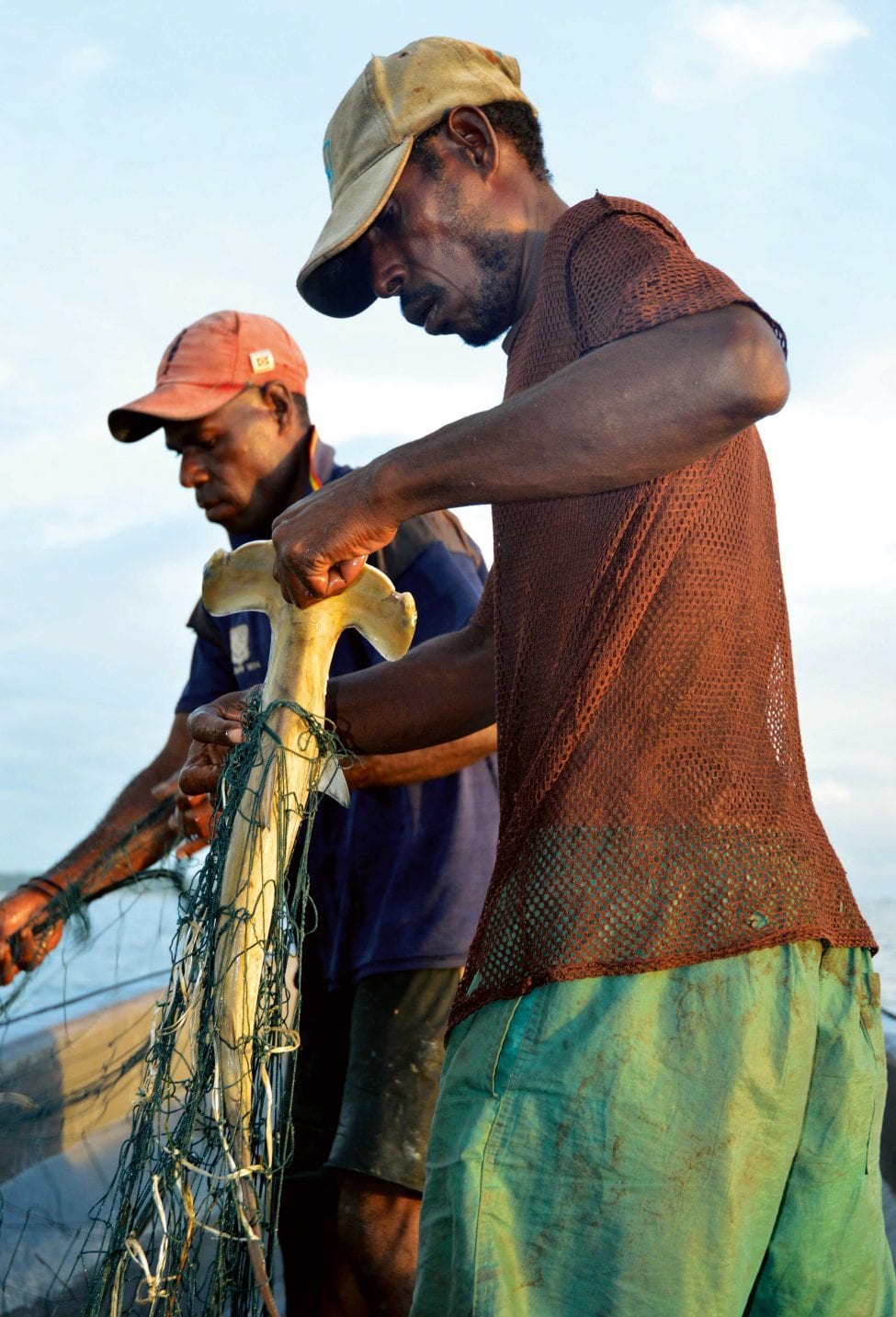Finding sea monsters at the ends of the earth
Fearing that she would be the researcher writing an obituary for sawfishes, Ruth Leeney turns her attention from Africa to Papua New Guinea in her search for these quasi-mythical creatures. They’re no myth, she finds with relief, yet their standing in local culture seems to have become as shaky as their survival in real life.
Papua New Guinea. It’s a place many people have never heard of and others associate with fearsome tribal cultures, cannibalism or the birds-of-paradise so beloved by David Attenborough. For me, it’s a place that has changed the trajectory of my research and conservation work and given me hope. Well, cautious hope.
I have been conducting research on sawfishes for six years, mostly in Africa. Sawfishes are weird and wonderful creatures, with a shark-like body and a flattened head attached to a long, somewhat intimidating, tooth-studded ‘saw’. They come into the mouths of rivers to give birth or, in the case of one species, actually swim up rivers and into fresh water. It is this behaviour that brings the third biggest fishes in the ocean – some can reach a length of seven metres (23 feet) – into shallow coastal and river waters, where they are then frequently encountered by people living and fishing in those areas. In the past, that meant that sawfishes swam their way into the folklore and culture of many coastal peoples; nowadays it simply means that they must navigate waters upon which expanding coastal populations rely and in whichever greater numbers of fishing nets are set. That doesn’t usually end well for sawfishes.
Among sharks and rays, the sawfish family is now thought to be the one at greatest risk of extinction, and sawfish populations in many parts of the world have already disappeared. In four years of investigating whether they still exist anywhere off the coastlines of Africa where they were once common, I never once saw a live sawfish – or even a dead one. In some West African countries, fishermen and women mostly shook their heads and estimated that it had been 30 or 40 years since they had last seen a sawfish if indeed they had seen one at all. If I was to avoid gaining the reputation of writing the obituary for sawfish populations in the developing world, I knew I needed to change tack.
There are five species of sawfishes globally and four are found in the waters of northern Australia. Papua New Guinea was once connected to northern Australia by a land bridge and, at their closest, the mainlands of the two countries are just 150 kilometres (93 miles) apart. This proximity to a known stronghold for sawfishes, and many historical records of sawfishes in the country, suggested that Papua New Guinea could be an important area for these endangered relatives of sharks. And so it was that, in April 2017, I found myself making the long trip from South Africa to a small town on the north coast of Papua New Guinea and from there along a bumpy track for several hours to the village of Angoram, on the bank of the Sepik River.
Seeking Madagascar’s sawfishes
Based in one of the world’s most unusual and unexplored ecosystems, Ruth aims to unravel the mystery of Madagascar’s sawfishes. Which species are present? What threats do they face? Can communities be convinced to protect them?


